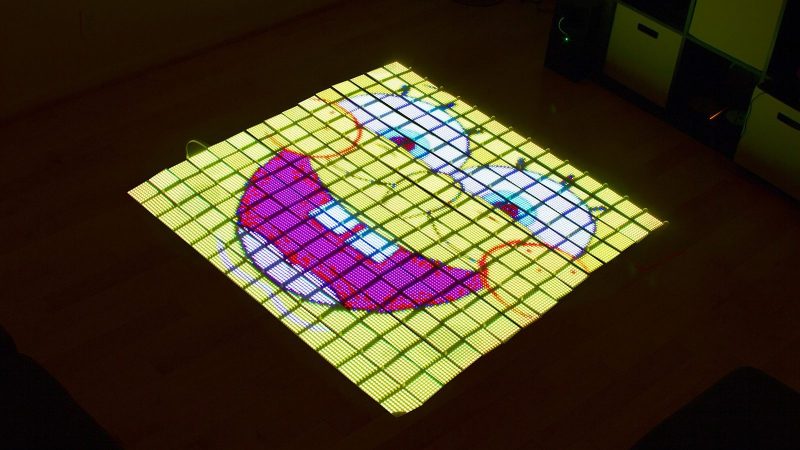Is [SpongeBob SquarePants] art? Opinions will differ, but there’s little doubt about how cool it is to render a pixel-mapped time-lapse portrait of Bikini Bottom’s most famous native son with a roving light painting robot.
Inspired by the recent trend of long exposure pictures of light-adorned Roombas in darkened rooms, [Hacker House] decided to go one step beyond and make a lighted robot with less random navigational tendencies. A 3D-printed frame and wheels carries a pair of steppers and a Raspberry Pi. An 8×8 Neopixel matrix on top provides the light. The software is capable of rendering both simple vector images and rastering across a large surface to produce full-color images. You’ll notice the careful coordination between movement and light in the video below, as well as the impressive turn-on-a-dime performance of the rover, both of which make the images produced so precise.
We’ve covered a lot of light-painting videos before, including jiggering a 3D-printer and using a hanging plotter to paint. But we haven’t seen a light-painter with an essentially unlimited canvas before. We’d also love to see what two or more of these little fellows could accomplish working together.















Pi fan plans precision slow scan floor cam. Nice man! Great plan!
This should be combined with the “HANGING 3D PRINTER “.
I did light painting with a polargraph (“hanging V”) plotter. That’s like the 2D version of what you’re suggesting:
https://www.flickr.com/photos/91789568@N00/albums/72157637967495043
Click on the image — I didn’t know it would display one of the images from the flickr album instead of just showing the link.
And I didn’t know that Flickr links are case sensitive, and Hackaday changed an uppercase ‘N’ to lowercase, making the link not work (after the @ character).
Slow-scan holodeck?
So this can paint lines on the floor, and the line follower can come along afterwards to undo the lines.
Michael
Like MO from Wall-E.
Love it!
I would love to see this concept combined with this radio signal tracking method (http://hackaday.com/2015/02/17/mapping-wifi-signals-in-3-dimensions/) with a computer-controlled quadcopter with the actual environment exposed in the photo as well.
I would also love to see this combined with a z axis